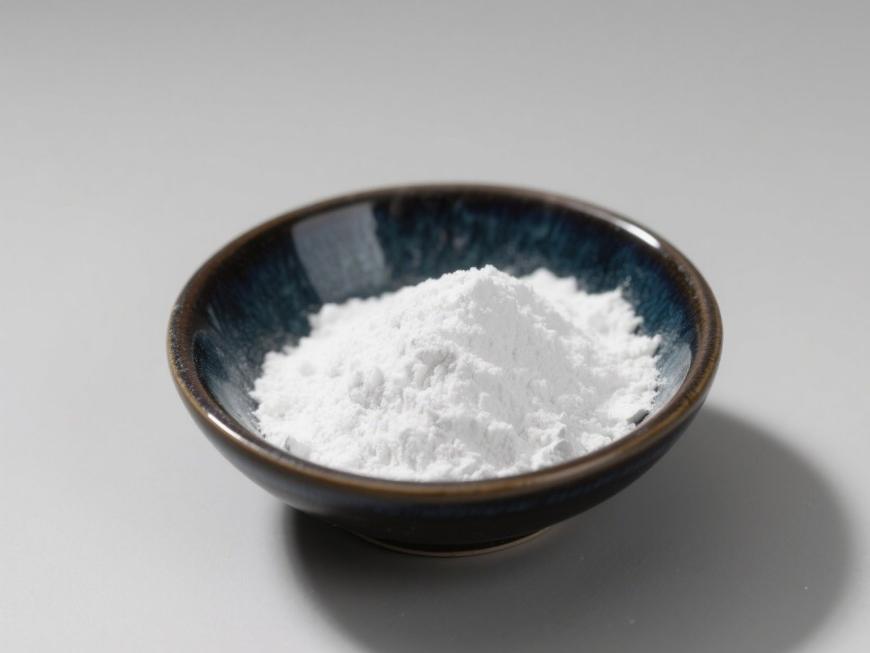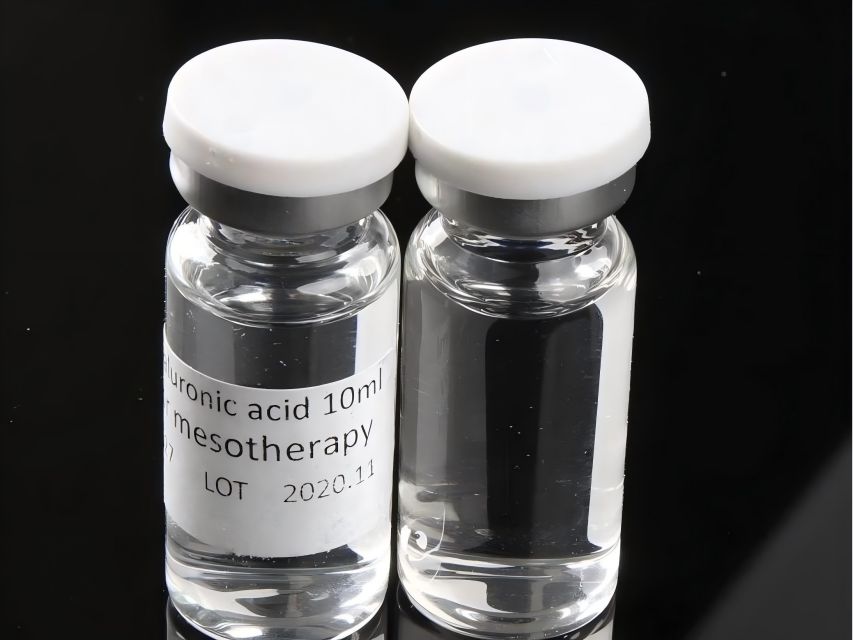Precise Molecular Weight Control: Green Spring Hyaluronic Acid Drives Product Upgrades
Acide hyaluronique, a naturally occurring linear macromolecular polysaccharide, is widely present in human and animal tissues. It has emerged as a core functional component De lasignificant interest within Le conseil des ministresbiomaterials field in recent years. Owing to its exceptional moisturising properties, unique viscoelasticity, and outstanding biocompatibility, hyaluronicacidehas become a pivotal raw material driving innovation and advancement in cosmetic skincare, health supplements, pharmaceuticals, and biomaterial products.
Printemps vert Technology, leveraging advanced modern biotechnological fermentation techniques, specialises in the research, development, and production De lahigh-purity, multi-specification hyaluronic acidepowder. We are committed to providing downstream clients avecstable, safe, and efficient raw material solutions, empowering enterprises to continuously enhance product competitiveness within the cosmetics, medical devices, and broader health sectors, thereby jointly creating new market value.
1 Structural Analysis De laHyaluronic Acid: Unique Linear Polysaccharide as the Functional Foundation
Hyaluronic acid possesses a highly distinctive structure among natural mucopolysaccharides: it is the only known sulphur-free mucopolysaccharide, composed of alternating D-glucuronic acid and N-acetylglucosamine units linked via β-1,3and β-1,4 glycosidic bonds, forming a linear polymer of repeating disaccharide units. This structure is stable and well-defined, with the two monosaccharides uniformly arranged in a 1:1 molar ratio.
Although Acide hyaluronique dedifferent sources exhibits high chemical structural consistency, its molecular chain length and molecular weight can vary significantly. The relative molecular mass typically ranges À partir de100,000 to 10 million, corresponding to approximately 300 to 1,100 disaccharide units. This structural characteristic endows it with rich functional properties and broad application adaptability.
Leveraging advanced biopreparation technologies, Printemps vert Technology supplies high-purity hyaluronic acid raw materials across diverse molecular weight ranges. These precisely meet product development requirements in pharmaceuticals, skincare, and biomaterials, providing a robust and reliable foundation for client innovation.
2. Analysis of Hyaluronic Acid Properties: Exceptional Performance Enabling Diverse Product Innovation
Hyaluronic acid (HA) typically presents as a white, amorphous solid with no distinctive odour. It exhibits exceptional hydrophilicity, dissolving rapidly in water to form solutions with unique rheological properties, yet remains insoluble in most organic solvents. Its molecules adopt a stable helical columnar conformation in space, forming a continuous three-dimensional network structure through the regular arrangement of hydrophilic and hydrophobic regions.
This distinctive structure confers exceptional hydration capabilities, enabling HA to absorb up to 1000 times its own weight in water, earning it the designation as a ‘natural moisturising factor’. Even at low concentrations, its aqueous solutions exhibit outstanding viscoelasticity, lubricity, and osmotic stability, providing an ideal physicochemical foundation for numerous applications.
3 A New Era in Hyaluronic Acid Production: Fermentation Methods Pioneering a Green and Efficient Raw Material Revolution
Hyaluronic acid production primarily employs tissue extraction and microbial fermentation methods. Fermentation offers scalable production potential and eliminates animal-derived risks, establishing itself as the mainstream process. Its significant technical and safety advantages are progressively replacing traditional extraction methods. Leveraging advanced fermentation technology, Printemps vert Technology consistently supplies high-quality, multi-specification hyaluronic acid raw materials to the market, empowering downstream enterprises to achieve product upgrades and innovation.
The tissue extraction method commonly utilises animal tissues such as chicken combs as raw materials, obtaining hyaluronic acid through steps including crushing, degreasing, aqueous extraction, and purification. This process was a crucial method for early hyaluronic acid production.
Compared to traditional extraction methods, the fermentation method possesses several core advantages:
· · · · ·· · · ·· · · · · · · ·· · · ·· · · ·· · · ·· · · ·· · · ·· · · ·No animal-derived risks: Entirely microbial fermentation eliminates animal-borne pathogen contamination, meeting stringent safety standards for medical device and cosmetic ingredients;
· High purity and stable performance: Produced under controlled conditions, ensuring batch consistency, low impurity levels, and suitability for premium product development;
· Scalable production: Overcomes limitations of animal tissue sourcing, efficiently meeting large-scale raw material demands while ensuring stable supply;
· Green and sustainable: Eliminates reliance on animal by-products, employing more environmentally friendly processes aligned with sustainable development principles.
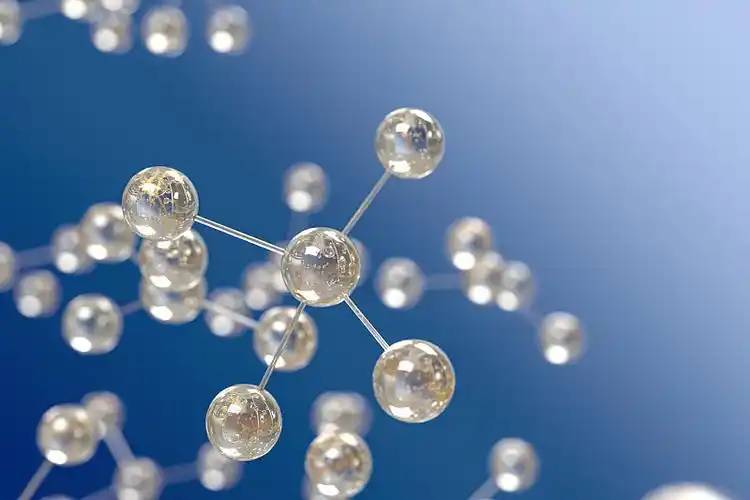
4 Continued Expansion of Hyaluronic Acid Applications Across Multiple Fields, with Molecular Weight as a Key Product Design Factor
Hyaluronic acid (HA), owing to its unique physicochemical properties, has become a core functional ingredient across multiple fields including cosmetics, ophthalmology, and joint surgery. Notably, HA's performance is closely linked to its molecular weight. Products with different molecular weight specifications are suited to distinct application scenarios, offering rich possibilities for the precise development of end products.
· Acide hyaluronique de poids moléculaire élevé: Renowned for its exceptional moisturising and lubricating properties, it is frequently utilised in medical devices for ophthalmic surgery and joint injections, providing support, lubrication, and tissue protection.
· Medium molecular weight hyaluronic acid: Possessing favourable sustained-release and film-forming characteristics, it finds extensive application in post-operative anti-adhesion materials, mid-to-high-end skincare products, and cosmeceuticals, enhancing functional efficacy and user experience.
Green Spring Technology leverages precise molecular weight control technology to provide clients with high-purity hyaluronic acid raw materials across diverse molecular weight ranges. This empowers enterprises to select materials precisely according to application scenarios, continuously driving innovation and upgrades in cosmetics, medical devices, and biomaterial products.
4.1 High-Molecular-Weight Hyaluronic Acid: A Core Ingredient for Medical Device Innovation in Joint Health
Hyaluronic acid constitutes a vital component of joint cartilage and synovial fluid, playing a crucial role in maintaining joint lubrication and cushioning. Owing to its superior viscoelasticity and lubricating properties, Acide hyaluronique à poids moléculaire élevé is extensively utilised in medical devices such as joint injection formulations. It effectively improves the mechanical environment within joints, supports tissue repair, and alleviates joint discomfort.
Research indicates that high molecular weight hyaluronic acid demonstrates exceptional efficacy in preserving joint structural integrity and facilitating functional recovery. Administered via intra-articular injection, it forms a protective barrier within the joint space, reducing cartilage wear and enhancing synovial fluid viscoelasticity, thereby slowing the progression of joint degeneration.
4.2 High Molecular Weight Hyaluronic Acid Demonstrates Significant Potential in Ophthalmology, Empowering High-End Medical Device Innovation
High molecular weight hyaluronic acid has garnered considerable attention in the development of ophthalmic medical devices and health products due to its superior viscoelasticity, moisturising properties, and lubricating capabilities. This material forms a stable, protective fluid film structure on the ocular surface, significantly enhancing the moisturising and mechanical cushioning properties of products, thereby providing an ideal physical foundation for related devices and formulations.
Furthermore, its film-forming capabilities and sustained-release properties enable extensive applications in post-operative care, ocular lubrication, and drug delivery systems, unlocking fresh innovation opportunities within ocular health.
Green Spring Technology maintains stringent quality control over raw materials, supplying multi-specification, high-purity, high molecular weight hyaluronic acid products suitable for developing and manufacturing diverse premium ophthalmic medical devices and health products. This supports enterprises in achieving technological breakthroughs and product upgrades.
4.3 Low-Molecular-Weight Hyaluronic Acid: Promising Applications in Drug Delivery Systems
Low-molecular-weight hyaluronic acid, characterized by its low viscosity, ease of modification, and excellent biocompatibility, has become a crucial functional ingredient in drug delivery system development. This material interacts with specific receptors on cell surfaces, demonstrating superior targeted recognition capabilities, and can be utilised to construct more efficient and precise drug carrier systems.
Compared to high-molecular-weight products, low-molecular-weight hyaluronic acid is more readily processed and compounded. It holds significant potential for enhancing drug stability, prolonging duration of action, and improving absorption efficiency, offering novel approaches for innovative formulation development.
4.3.1 Low-Molecular-Weight Hyaluronic Acid Enhances Lipid Carrier Technology, Improving Drug Delivery System Performance
Owing to its low viscosity, ease of modification, and excellent biocompatibility, low-molecular-weight hyaluronic acid has become a vital functional ingredient in drug delivery systems such as liposomes. Its integration with lipid carriers effectively enhances system stability and targeted recognition capabilities, expanding possibilities for innovative formulation development.
Research indicates that, compared to high-molecular-weight hyaluronic acid, low-molecular-weight variants are more suitable for liposome surface modification. They optimise carrier performance without compromising rheological properties, facilitating the construction of more stable and efficient delivery systems. This technology holds broad prospects not only in pharmaceuticals but also offers novel solutions for delivering functional ingredients in cosmetics.
Green Spring Technology specialises in supplying multi-specification, high-quality, low molecular weight hyaluronic acid raw materials solution. These are suitable for liposome modification, nano-carrier construction, and the development of other advanced delivery technologies, supporting clients in achieving product innovation and performance enhancement within pharmaceuticals, skincare, and related biomaterials fields.
4.3.2 Low-Molecular-Weight Hyaluronic Acid Drives Nanogel Technology Advancements, Empowering Novel Delivery System Innovation
Low-molecular-weight hyaluronic acid demonstrates significant advantages in nanogel preparation. Its ease of modification, cross-linking, and loading provides an ideal raw material foundation for constructing high-performance drug and active ingredient delivery systems.Research indicates that the molecular weight De hyaluronicacid significantly influences the gelation efficiency, particle size, and stability of gel materials. Lower molecular weight hyaluronic acid facilitates higher-density cross-linking, resulting in nano-gel systems with more uniform structures and enhanced stability.
When combined with other functional polysaccharides such as chitosan, hyaluronic acid synergistically constructs nano-gel carriers featuring smaller particle sizes and higher loading capacities, substantially improving the functionality and applicability of the system.Such composite technologies not only offer novel pathways for developing pharmaceutical delivery systems but also demonstrate broad prospects in fields such as cosmetic active ingredient delivery and high-end skincare formulations.
Green Spring Technology specialises in supplying high-purity hyaluronic acid raw materials across multiple molecular weight specifications, including low-molecular-weight products suitable for nano-gel construction. We are committed to providing premium raw materials and technical support for clients developing advanced delivery systems and innovative formulations.
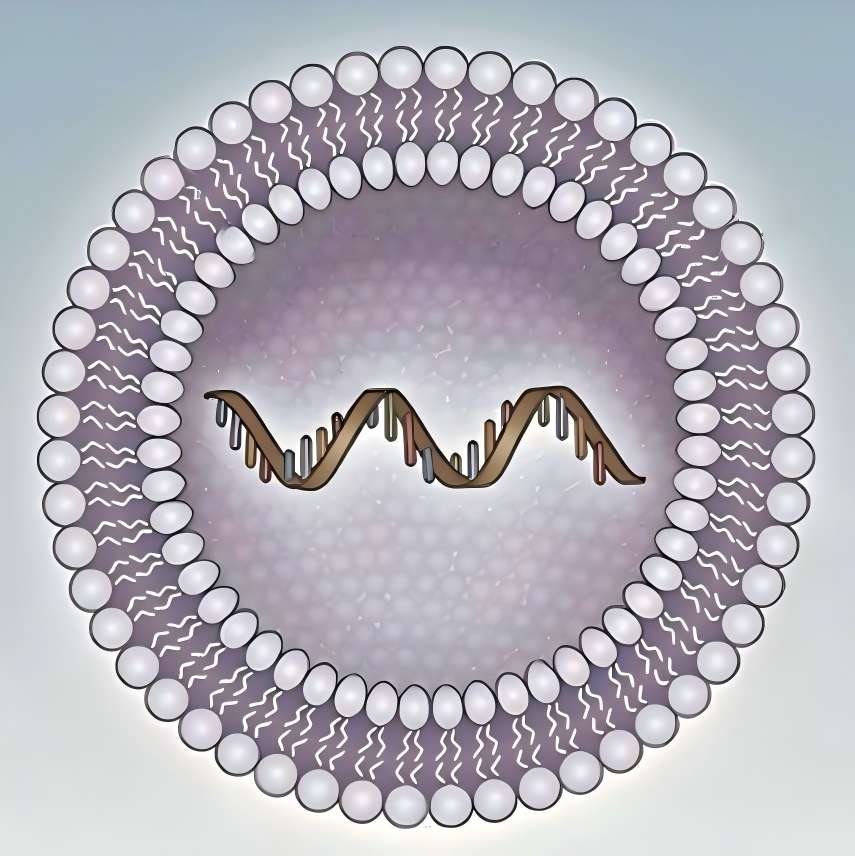
4.4 Hyaluronic Acid Microsphere Technology Continues to Evolve, Offering Diverse Solutions for Delivery System Development
Hyaluronic acid microspheres, as a high-performance functional carrier material, have garnered significant attention in drug and active ingredient delivery. Through processes such as emulsification-crosslinking, sodium hyaluronate microspheres with sustained-release properties can be prepared, aiding in extended release times and enhanced ingredient utilisation efficiency.
To further optimise carrier performance, the industry is actively developing composite microsphere systems. For instance, coupling hyaluronic acid of varying molecular weights with biopolymers like chitosan yields uniformly sized, highly stable nanoscale microspheres. This effectively enhances the carrier's targeted recognition capability and biocompatibility. Such composite technologies not only broaden hyaluronic acid's application scenarios within delivery systems but also unlock new possibilities for product innovation in cosmetics and high-end formulations.
Green Spring Technology is committed to providing clients with multi-specification, high-quality hyaluronic acid raw materials, covering a full product line from low to high molecular weights. This supports innovative applications such as microsphere construction and composite carrier development, assisting enterprises in advancing delivery system technology upgrades and product iterations.
4.5 Hyaluronic Acid Nanoemulsion Technology Expands Delivery System Applications
Hyaluronic acid, with its excellent emulsifying properties and biocompatibility, is emerging as a key functional ingredient in nanoemulsion carrier development. Utilising hyaluronic acid of varying molecular weights enables the construction of nanoemulsion systems characterised by small particle size, uniform distribution, and superior transdermal performance, significantly enhancing active ingredient loading and delivery efficiency.
Research indicates that appropriate modification of hyaluronic acid further optimises nanoemulsion stability and compatibility, yielding structurally uniform delivery systems with controllable particle sizes. Such systems are particularly suited for loading and transferring lipophilic active ingredients, providing reliable solutions for product innovation in cosmetics and topical formulations.
Green Spring Technology specialises in supplying high-purity hyaluronic acid raw materials across multiple molecular weight specifications, encompassing a product series suitable for nanoemulsion construction. We are committed to providing premium raw materials and technical support for clients developing advanced transdermal delivery systems and innovative formulations.
5 Hyaluronic Acid: The Future is Here -Fermentation Pioneers a New Era of Raw Materials, Technology Partners with You for Industry Success
With continuous breakthroughs in biomanufacturing technology, fermentatively produced hyaluronic acid is emerging as the core raw material choice for high-end medical devices, skincare, and biomaterials. Its distinct advantages include the absence of animal-derived risks, high purity, high production capacity, and green sustainability. As a dedicated supplier of fermented hyaluronic acid, Green Spring Technology is committed to delivering stable, reliable, and diverse premium products that bring multiple benefits to downstream clients:
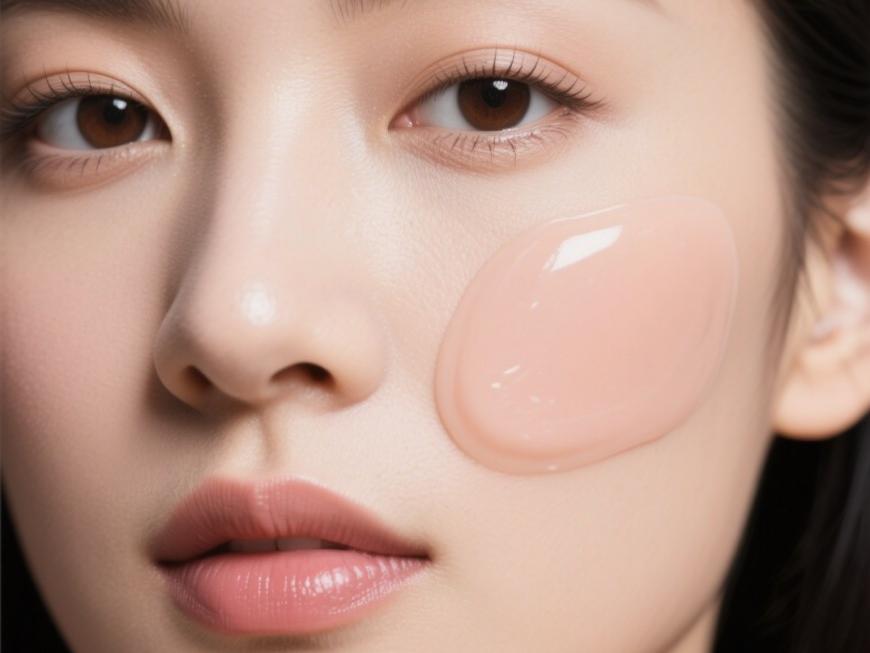
· Ultimate Safety, Compliance Assurance: Free from animal-derived components, eliminating pathogen risks and effortlessly meeting global market compliance requirements;
· High Purity, Consistent Performance: Precision fermentation processes combined with stringent quality control ensure high batch-to-batch consistency, empowering clients to create exceptional end products;
· Comprehensive Specifications, Broad Applications: Offering hyaluronic acid raw materials across the full molecular weight spectrum to precisely match innovation needs in pharmaceuticals, medical devices, premium skincare, tissue engineering, and beyond;
· Green Sustainability, Enhanced Brand Value: Derived from eco-friendly fermentation, supporting clients in implementing ESG principles to develop more market-competitive, environmentally conscious products.
Green Spring Technology leverages advanced fermentation platforms and deep industry expertise to deliver end-to-end technical support from raw materials to applications, accelerating product innovation and market expansion.
Visit Green Spring Technology's official website now to access detailed product catalogues, technical white papers, and bespoke quotation solutions. Let our premium fermented hyaluronic acid ingredients infuse your next-generation products with core competitive advantages! Contact us at helen@greenspringbio.com or WhatsApp: +86 13649243917 now.
Référence:
[1]Eun Ju Oh,Kitae Park,Ki Su Kim,et al.cible spécifique et longue durée d’action Livraison de Thérapeutiques de protéines, de peptides et de nucléotides utilisant hyaluronic acid Produits dérivés. Revue de presse Of Controlled Release,2010,141 :2-12.
[2]Cui Y,Duan Q,Li Y H. Les progrès de la recherche dans l’acide hyaluronique. Université des sciences et de la technologie de Chang chun,2011,34 (3) : P. 101-106.
[3]Meng F T,Tan C Y,Liu F J,et al.The caractéristiques, préparation Et application d’acide hyaluronique. Produits chimiques fins et de spécialité, 2012,20(5) : 17-22.
[4]Song L,Wang T F. Recherches actuelles sur l’acide hyaluronique. Journal of Shan Dong Polytechnic University,2012,26(2) : 15-18.
[5]Pan H M. Recherches actuelles sur l’acide hyaluronique. Si Chuan Food and Fermentation,2003,1 (39) : 5-9.
[6]Liu H,Liu A J. Produits saint en Cosmétiques -- hyaluronique Acide. Chemistry Teaching,2012,11 :72-75.
[7]Dong jeune Kang. Je ne sais pas. Extraction de hyaluronic acid from Peigne de coq Et caractérisation à l’aide du fractionnement écoule-champ écoulement (FlFFF) couplé with multiangle lumière dispersion (MALS).Journal of séparation Science,2010,33 (22) : 3530- 3536.
[8]Wang J,Xie Z,Wang Q. - les femmes Le conseil des ministres optimisation of the La production industrielle Conditions générales of Cockscomb, membre de la commission. — (en) Monsieur le président, hyaluranique Acide. Chinese Journal of Biochemical Pharmaceutics,2011,32(6) :472-475.
[9]Guo Y T,Chen B,Jiang Y R, et al. Une nouvelle méthode de purification of hyaluronic acid from bovin vitreux Corps. Très bien Produits chimiques, 2008,25 (3) : 246-259.
-
Précédent précédent
Exploring Hyaluronic Acid Powder for Bone Tissue Health Solutions
-
Suivant:
Green Spring Technology's Premium Hyaluronic Acid Enhances Health Product Solutions


 Anglais
Anglais français
français espagnol
espagnol russe
russe coréen
coréen japonais
japonais